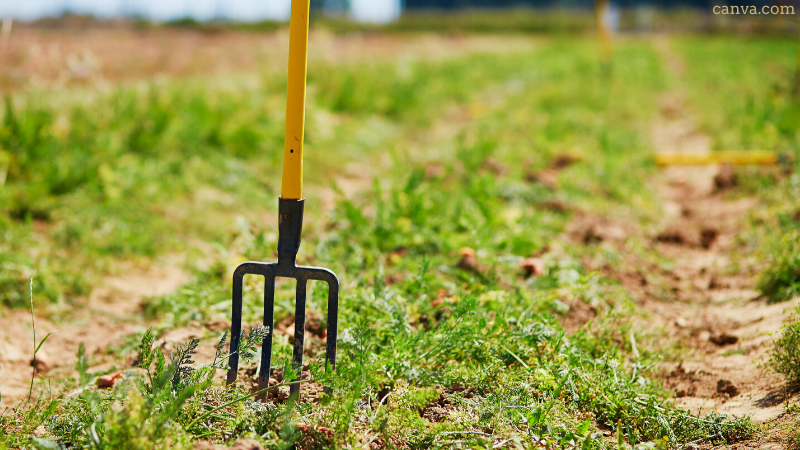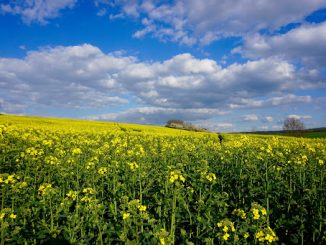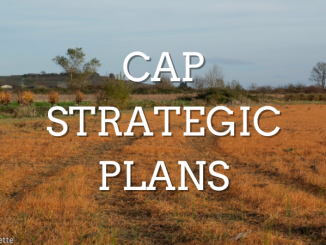 By Hans Wetzels
By Hans Wetzels
According to a new policy note by ClientEarth, the EU COVID19-recovery plan is a missed opportunity to make agriculture more sustainable – ‘Instead of tying these resources to effective green conditions, the Council and European Parliament have given Member States carte blanche.’ Hans Wetzels has more.
In December 2020, the Council of the European Union adopted a brand new regulation establishing a 750 billion European Union Recovery Instrument (EURI) to be able to support economic recovery in the aftermath of the COVID-19 crisis still ravaging the continent. The new EURI-mechanism makes available a total of 7.5 billion euros for rural development and agriculture on top of the money already reserved under the Common Agricultural Policy (CAP). When adopting the rules for this massive bail out the EU co-legislators agreed that the money should be used to fund measures in line with the environmental commitments already set out by the European Commission in its Green Deal.
But in practice, the recovery fund represents a missed opportunity for more sustainability, the environmental charity ClientEarth argues in a new policy note: ‘At a crucial time, when supporting farmers in the fight against climate change, soil degradation and biodiversity loss is most needed, the European Parliament and the Council of the European Union have done little more than window dressing. In reality, they have favoured business as usual, turning their back on the green recovery of agriculture.’
Read the ClientEarth Document The Recovery Budget for Agriculture
Moving backwards
ClientEarth is a charity with offices in London, Brussels, Warsaw, Berlin and Beijing. The group was founded in 2008 and its lawyers use judicial frameworks to hold governments and companies accountable over issues concerning climate change, loss of biodiversity and pollution. In the new memo, ClientEarth provides an overview of the European legislative framework applicable to the recovery budget for rural development, and ‘finds that the Council and European Parliament did not vote for legislations that will empower such a green recovery.’
‘Rather, they encouraged Member States to maintain the status quo at a time when farmers urgently need to be supported in the fight against soil degradation, climate change and biodiversity loss,’ ClientEarth writes. ‘The transitional period builds on the old, and does not bring forward new initiatives with the potential to enhance the state of the environment and combat climate change. The framework designed for the use of the additional resources coming from the recovery budget is no exception: instead of tying these resources to effective green conditions, the Council and European Parliament have given Member States carte blanche. The ball is now in the court of national authorities. When revising their RDPs (Rural Development Programmes – red.), they have three options: maintaining the status quo; favouring measures with proven ecological value; or moving backwards.’
Twin strategies
In May 2020 the European Commission published two policy strategies – the Farm to Fork strategy and the Biodiversity Strategy – aimed at making agriculture more sustainable, and should by 2030 have dammed in pollution, cut pesticide use in half, halted soil erosion and protected insect populations. In order to do that, the Commission plans flower strips alongside fields all over Europe, wants to plant three billion trees, cleanup 25,000 kilometers of river beds, and proposes to drastically increase the number of protected nature reserves to create green corridors. Farmers are expected to slash the use of pesticides and fertilizers, and will have to let 10 percent of their fields lie fallow, while VAT rates on ecologically grown fruits and vegetables will decrease.

The biggest hurdle for the twin strategies to succeed will be aligning the ambitions set out in the Green Deal to the Common Agricultural Policy (CAP). In a 2020 report, the European Court of Auditors (ECA) concludes that the CAP has up until now not been performing well when it comes to protecting biodiversity. The amount of birds, butterflies and flying insects in Europe has steadily continued to decline and is now one third less than in 1990. The effects of CAP direct payments on farmland biodiversity, according to the ECA, are ‘limited’.
‘The European Commission is still in a position to withdraw its proposals for the CAP,’ ClientEarth writes. ‘But as inter-institutional negotiations progress, the less chances there are for this to happen. This poses a serious risk of leaving the EU farming sector increasingly vulnerable vis-à-vis the climate and biodiversity crises.’
Implications for CAP reform
To make matters more difficult, negotiations for the forthcoming CAP period have already been underway since 2018. In the midst of ongoing trilogue negotiations on the incoming CAP-reform, the EURI-recovery package might play a big role, ClientEarth analyses: ‘The rules on the recovery budget for rural development are intertwined with the CAP, the multiannual legislative framework that determines EU-wide rules for the distribution of the European agricultural funds. The share of the Multiannual Financial Framework budget for agriculture is divided between two funds: the European Agricultural Guarantee Fund (EAGF, also known as pillar 1) and the European Agricultural Fund for Rural Development (EAFRD, or pillar 2). Historically, the EAGF has the largest share of the CAP budget, being used to grant farmers support in the form of income calculated on a hectare basis, while the sums available under the EAFRD serve as subsidies for different types of interventions in rural areas … The [CAP] Transitional Regulation inserts a provision that determines the European rules applicable to the €7.5 billion recovery budget for rural development. This exceptional budget is to be divided between 2021 and 2022 with a ratio of 30:70, amounting to €2,387.7 million for 2021 and €5,682.7 million for 202212 (current prices).’
During the current CAP-negotiations it was, for the first time, agreed that EU member states themselves will decide how to implement EU rules and allocate budgets. Therefore, every European country is currently busy writing up a National Strategic Plan, which will be handed in to the European Commission in Brussels. To realise the goals set out in the Green Deal’s Farm to Fork and Biodiversity Strategies, the Commission is more or less counting on EU member states to take them into account when formulating national strategies. New regulations set forth in the recovery package might widen the parameters so that environmental ambitions are in fact lowered, ClientEarth warns in its analysis:
‘Following the new Article 58a of Regulation (EU) 1305/2013, when revising their Rural Development Programmes to make use of their share of the recovery budget for rural development, Member States are required to:
1. Dedicate at least the same overall percentage of the additional resources to environment-, climate- and Areas of Natural Constraint-related measures (those covered by Article 59, Paragraph 6 of the same regulation), in comparison to the percentage of the EAFRD that they spent for these measures in the previous CAP period;
2. Reserve 37% of their additional resources for environment-, climate- and Areas of Natural Constraint-related measures (those covered by Article 59, Paragraph 6 of the same regulation), animal welfare (Article 33) and LEADER (Article 59, Paragraph 5); and
3. Consacrate 55% of their additional resources for socio-economic measures in the form of investments in physical assets, farm and business development, basic services and village renewal in rural areas, and co-operation (as per Articles 17, 19, 20 and 35).
However, if they cannot simultaneously comply with the first and third rules, Member States can decide to derogate from either of them to the extent necessary to abide by the rule that was given precedence.’
Undermining the non-regression principle
For the environmental measures the European Commission set out in the Green Deal, the EURI-recovery package thus represents a threat. In the current CAP-period, member states were compelled to dedicate a minimum of 30 percent of their EAFRD share to measures bringing environmental benefits: ‘The additional resources that Member States receive from the recovery budget are not covered by this 30% threshold. Instead, the new Article 58a, Paragraph 3 establishes a non-regression principle, applicable to both the recovery money and the MFF share of the EAFRD. The non-regression principle requires Member States to maintain at least the same overall percentage of spending. In other words, each Member State must continue to dedicate the same overall share of the budget to the environment- and climate-related measures as well as measures for areas of natural constraints (ANC’s).’
But, ClientEarth continues: ‘A significant criticism can be raised against the measures eligible for funding by the recovery money, and by the rest of the EAFRD, under the non-regression principle. Whereas the CAP Transitional Regulation ascertains that such measures are “particularly beneficial for the environment and climate”, from a scientific perspective there is no evidence that monetary support for ANCs can be considered environment- or climate-friendly measures. In fact, by including payments for ANCs within the scope of the non-regression principle, the co-legislators have essentially undermined it.’
A Mirage
According to the ClientEarth-memo, there are a couple of explanations for the way the new package would undermine the goals set forth in the Green Deal. For example: ‘Member States are only expected to reserve “at least the same overall share of the EAFRD contribution” for environment-, climate- and ANCs-related measures, which implies no obligation to maintain or raise the support for effective environmental and climate measures. On the contrary, a Member State could still abide by the non-regression principle if it increased the level of payments for ANCs while lowering support for the other measures by a corresponding percentage.’
From an environmental point of view, the EURI-package creates nothing short of a mirage, ClientEarth concludes: ‘The rule according to which Member States must dedicate 55% of their recovery money’s share for socio-economic measures is also criticisable. Whereas providing that the use of these measures should contribute “to a resilient, sustainable and digital economic recovery …”, no mandatory criteria of biodiversity protection or climate mitigation were attached. Declaring precision and smart farming, innovation, digitalisation and modernisation of production machinery and equipment as eligible and privileged investments, without further definition, simply pushes for more of the same, i.e. damaging monoculture and industrial practices.’
More on CAP and the EU Green Deal
CAP, European Green Deal and the Digital Transformation of Agriculture
German Environment Ministry Proposals For CAP Green Architecture
Weaker Eco-Schemes and Pet Projects – Commission Factsheet Unpacked
CAP | Time for Commission to Get Real on Spending, Say Auditors





